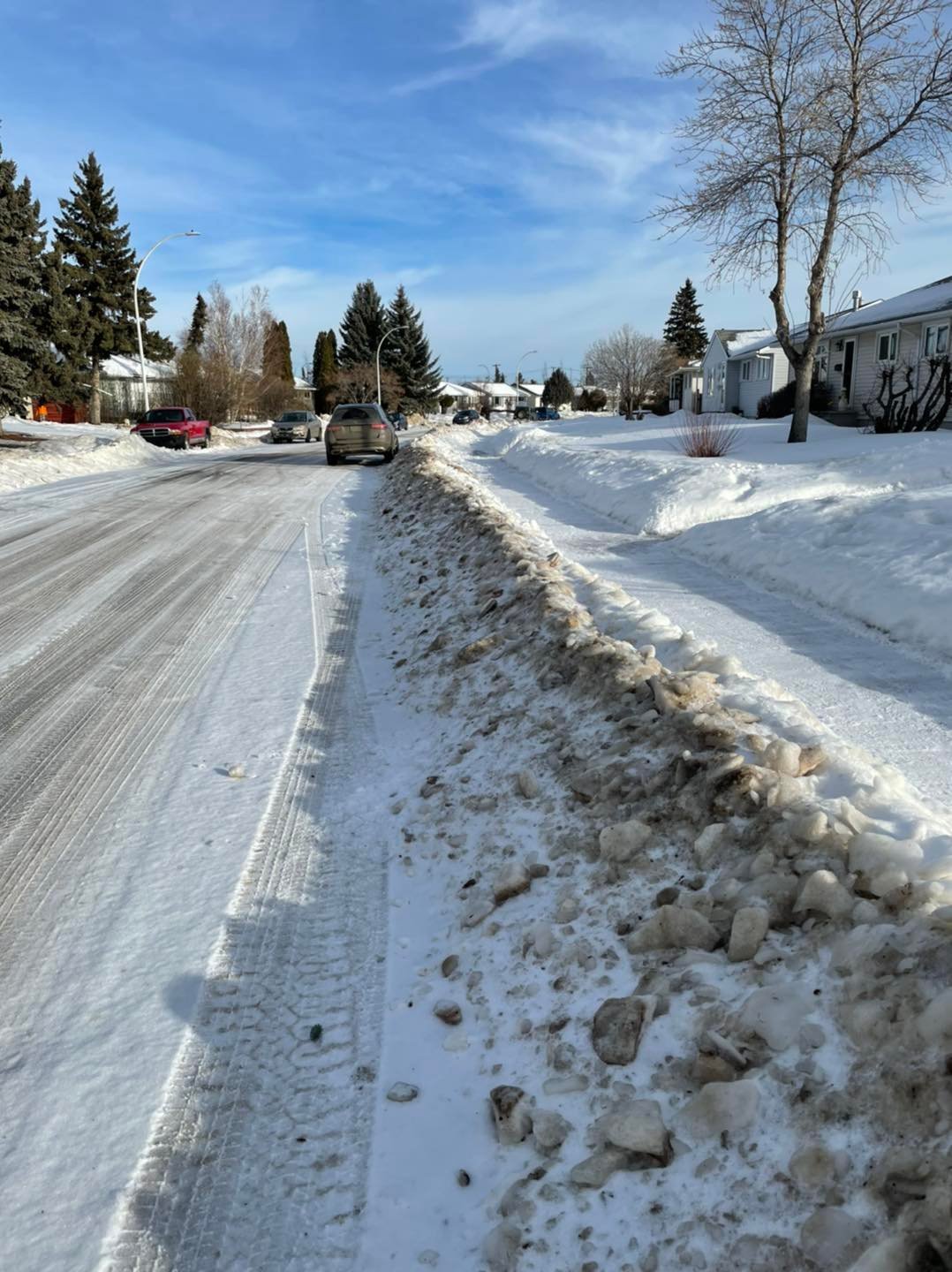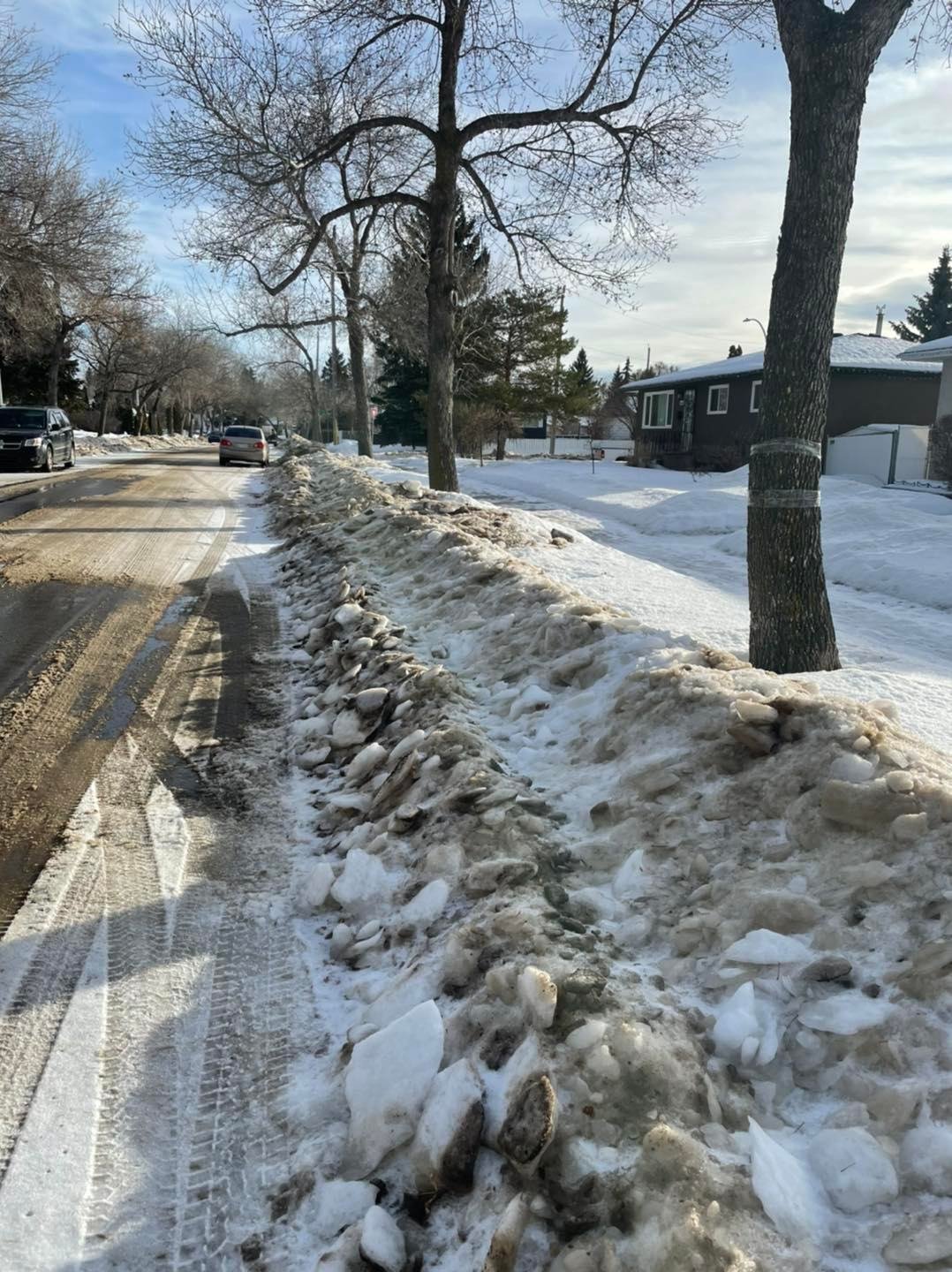Snow Removal Blog Part 4: Neighbourhood Blading
Why complete blading in our communities? It’s a question I’ve been asked a number of times and I want to provide some more detail beyond what was in my blog. The first image in this post is of a local road in High Park that I took earlier today. High Park had some light blading about a month ago but the full blading to pavement is still to come. Driving over that road is not too challenging. It’s bumpy but it’s passable. I rode my bike today and since I fortunately have bigger tires, it was somewhat ok riding over it.
If you are using a mobility aid or have limited mobility, that road is near impossible to safely cross. Unfortunately, many of the intersections in this community were like that today. These conditions have been fairly consistent the previous 3 winters when blading didn’t occur.
I had a chance to ride through 8 different communities today. Today’s focus was mature communities as I was out in newer communities last weekend. As I was out today, I stopped to talk to a number of residents to get their feedback on how things were going.
Probably unsurprisingly, those in communities that haven’t yet been expressed concerns about accessibility. Some of the residents regularly walk in their community and didn’t feel safe. On the other hand, those who have had blading expressed concerns about windrow size (second picture).
One interesting thing is that even in areas where there are large boulevards separating the sidewalk from the road, icy sidewalks can still exist. As you can see in the third and fourth pictures from Mayfield Community League YEG, the windrow is not close to the sidewalk but there is still an icy sidewalk. In that case, icy sidewalks were an issue due to the volume of snow that was coming from the yard. With that said, where there aren’t boulevards, windrows also create icy sidewalks as they melt. We see that quite a bit in newer communities, even with boulevards.
Part of what creates the height is that since many new communities have front driveways, there’s not as much space to distribute the windrow so it results in very large windrows on the street. This isn’t new but it’s particularly noticeable this year with the volume of snow. In the last 20 years, we’ve only seen as much snow in 2003 and 2011 so it’s definitely a large snowfall year.
So what do we do to prioritize accessibility? I wrote a blog series last week that outlines the history of our policy as well as the changes that I think we need to be made. If you haven’t read through this three-part blog yet, please visit this link.
The quick answer is that we starting building windrow removal into our budget. Whether we can do this in one year or over multiple years will be determined later this year. At a minimum, we need to ensure drains are kept clear and local intersections are regularly maintained.
We shouldn’t be trading one accessibility issue (intersection full of ruts) for another (icy sidewalks). While the third and fourth pictures show that removal of windrows cannot guarantee that sidewalks will not be icy, it would make a big difference in many communities.
Funding snow removal to prioritize accessibility should not be a debate. We’ve exhausted the cost-neutral options over the last decade. It’s time to put in the appropriate funding for a city that is much larger than it was 15 years ago when we had a very similar budget to today.
I want to thank the residents who took the time to chat with me today, it was great to hear from a variety of people and take a look at the work happening in each of our communities.




